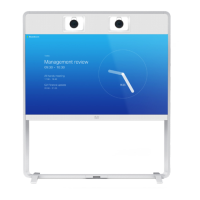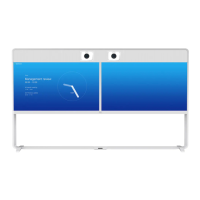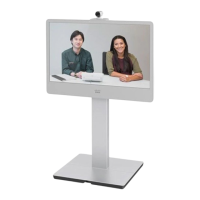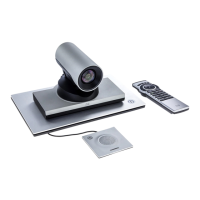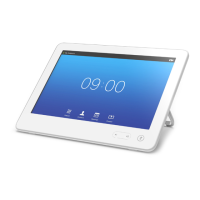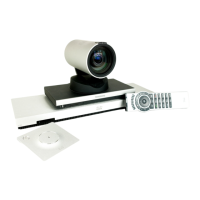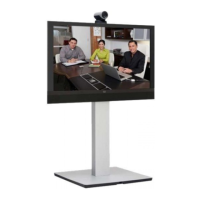
Do you have a question about the Cisco Telepresence MX200 and is the answer not in the manual?
| Resolution | 1080p (Full HD) |
|---|---|
| Audio | Integrated microphone array and speakers |
| Network | Gigabit Ethernet |
| Connectivity | HDMI, USB |
| Video Standards | H.264 |
| Codec | Cisco |
Learn how to enable or disable the Do Not Disturb function for calls.
Instructions for contacting the helpdesk or accessing support resources.
Manage selfview and adjust camera settings for optimal viewing.
Control microphone audio by muting or unmuting during calls.
Adjust the audio volume for calls and system sounds.
Learn to share screen content and deliver presentations during calls.
Access and manage the voicemail system for missed messages.
Check the schedule for upcoming meetings and appointments.
Access and manage your contact list, including favorites and recent calls.
Open and use the dial pad for making calls.
Instructions on how to initiate a call using various methods.
Make calls by selecting contacts from your stored list.
Initiate calls by searching for contacts by their name.
Dial a number directly using its IP address.
Dial a contact by entering their phone number.
How to answer or decline incoming calls.
Manage incoming calls when already on an active call.
Learn how to transfer active calls to another party.
Consult with another party before transferring a call.
End an active call.
Control microphone audio status during a call.
Place calls on hold and then resume them.
Adjust the bandwidth allocation for call quality.
Activate or deactivate the Do Not Disturb feature.
Put the system into standby mode to save power.
Access the dialpad during an active call for input.
Add more people to an ongoing conference call.
See a list of all participants in the current meeting.
Fix the view to a specific participant during a conference.
Remove a participant from an active conference call.
Present content during a call or conference.
Access the list of scheduled video meetings.
Instructions on how to join an upcoming scheduled meeting.
Browse and search the corporate phonebook.
View and manage recent incoming, outgoing, and missed calls.
Save predefined zoom and pan settings for the camera.
Modify saved camera presets.
Use saved presets to adjust your camera view.
Manually adjust camera pan, tilt, and zoom.
Control the selfview window position and settings.
Adjust the camera of another participant in the call.
Configure system sounds and ringtones.
Adjust camera settings like whitebalance and exposure.
Choose the default input source for the system.
Configure display settings, including DVI mode.
Select the user interface language.
View details about system software and hardware.
Check current call parameters like rate and encryption.
Enable advanced logging for troubleshooting.
Reboot the system without losing settings.
Access advanced settings like date, time, and network.


